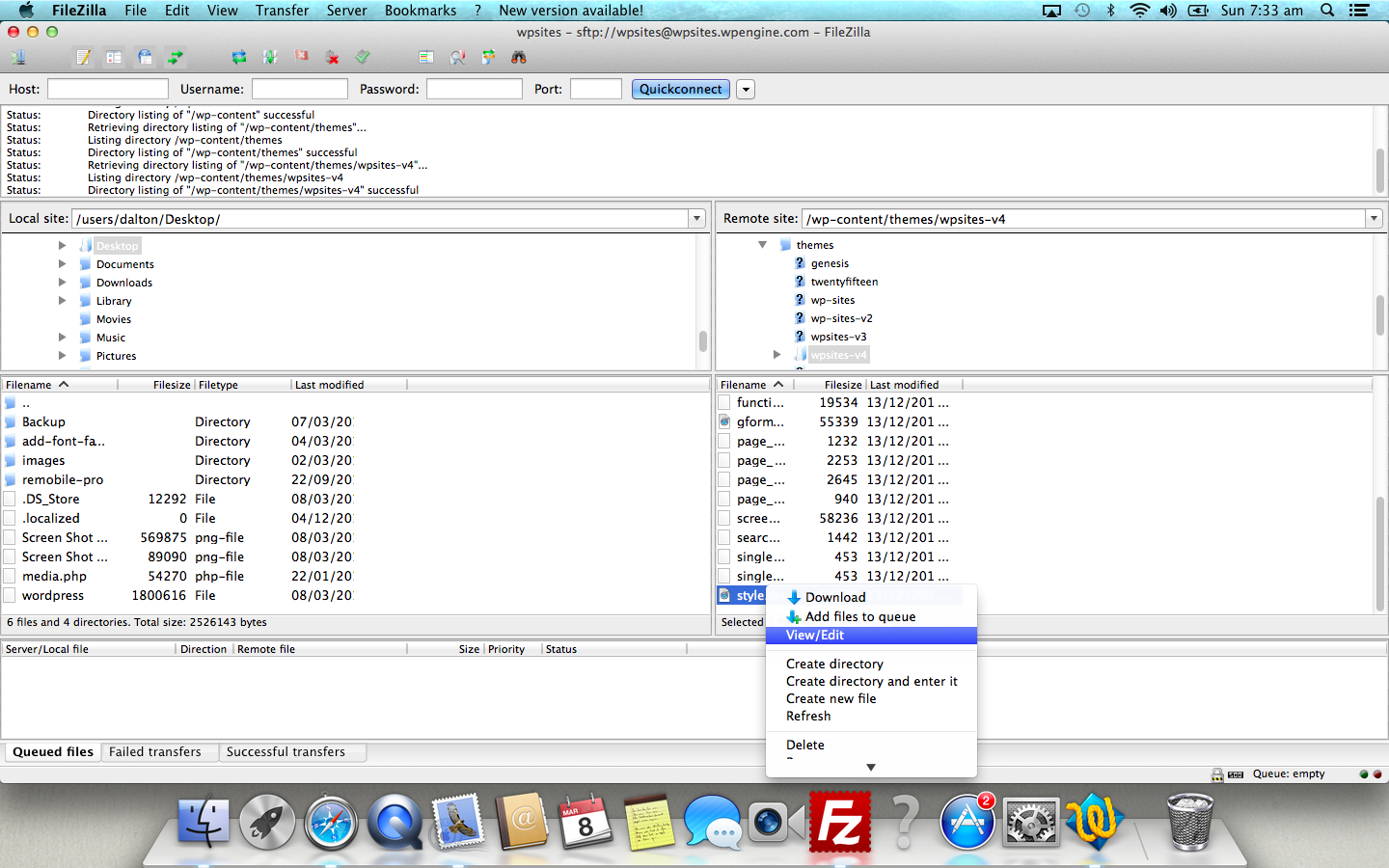

- #Wordpress for mac high siera ftp credentials on localhost install#
- #Wordpress for mac high siera ftp credentials on localhost update#
- #Wordpress for mac high siera ftp credentials on localhost pro#
- #Wordpress for mac high siera ftp credentials on localhost password#
You can watch the Apache error log in a new Terminal tab/window during a restart to see if anything is invalid or causing a problem: $ tail -f /usr/ local/var/ log/httpd/error_logĪpache is controlled via the apachectl command so some useful commands to use are: $ sudo apachectl start $ sudo apachectl stop $ sudo apachectl -k restart Try to restart Apache with: $ sudo apachectl -k restart You should see a few httpd processes if Apache is up and running. If you get a message that the browser can’t connect to the server, first check to ensure the server is up. It should already be running, so you can try to reach your server in a browser by pointing it at you should see a simple header that says “It works!”. You now have installed Homebrew’s Apache, and configured it to auto-start with a privileged account. Now we just need to configure things so that our new Apache server is auto-started $ sudo brew services start httpd Upon completion you should see a message like: 🍺 /usr/ local/Cellar/httpd/2.4.29_1: 1,625 files, 26M Without options, httpd won’t need to be built from source, so it installs pretty quickly.
#Wordpress for mac high siera ftp credentials on localhost install#
Now we need to install the new version provided by Brew: $ brew install httpd It really doesn’t hurt to just run all these commands in order – even if it’s a fresh installation: $ sudo apachectl stop $ sudo launchctl unload -w /System/Library/LaunchDaemons/ 2>/dev/null If you already have the built-in Apache running, it will need to be shutdown first, and any auto-loading scripts removed. However, the solution is to install Apache 2.4 via Homebrew and then configure it to run on the standard ports (80/443). The latest macOS 10.13 High Sierra comes with Apache 2.4 pre-installed, however, it is no longer a simple task to use this version with Homebrew because Apple has removed some required scripts in this release.

Now you are ready to brew! Apache Installation
#Wordpress for mac high siera ftp credentials on localhost update#
If you already have brew installed, make sure you have the all the latest available brews: $ brew update We are going to use a PHP brews that require an external tap: $ brew tap homebrew/php It will instruct you if you need to correct anything. You should probably also run the following command to ensure everything is configured correctly: $ brew doctor Homebrew/homebrew-core (git revision 6286 last commit ) This may take a few minutes, but when complete, a quick way to ensure you have installed brew correctly, simply type: $ brew -version
#Wordpress for mac high siera ftp credentials on localhost password#
Just follow the terminal prompts and enter your password where required. This is a simple process, but you need to launch your Terminal ( /Applications/Utilities/Terminal) application and then enter: $ ruby -e " $(curl -fsSL )" Using the brew command you can easily add powerful functionality to your mac, but first we have to install it. This process relies heavily on the macOS package manager called Homebrew. If you don’t already have XCode installed, it’s best to first install the command line tools as these will be used by homebrew: $ xcode-select -install Homebrew Installation If you are a beginner developer, you will be better served using MAMP or MAMP Pro. This guide is intended for experienced web developers.

In the second blog post in this two-post series, we will cover MySQL, Apache virtual hosts, APC caching, and Xdebug installation. In this blog post, we will walk you through setting up and configuring Apache 2.4 and multiple PHP versions. It is times like these that people often look for an alternative approach, and luckily there is one, and it is relatively straight-forward to setup.
#Wordpress for mac high siera ftp credentials on localhost pro#
However, there are times when MAMP Pro has slow downs, or out of date versions, or is simply behaving badly due to its restrictive system of configuration templates and non-standard builds. There are plenty of options for setting up your development environments, including the ever-popular MAMP Pro that provides a nice UI on top of Apache, PHP and MySQL. Since 10.12 we now use Homebrew’s Apache, rather than the built-in version, but this new appraoch is more flexible and should continue to work on prior OS X versions.ĭeveloping web applications on macOS is a real joy. The newly released macOS 10.13 High Sierra and the accompanying updates to Brew require significant changes compared to prior releases, necessitating a thorough revamp in the process. This is an updated version of our prior OS X development series.


 0 kommentar(er)
0 kommentar(er)
